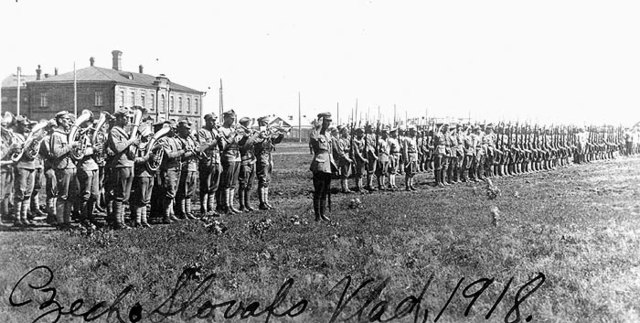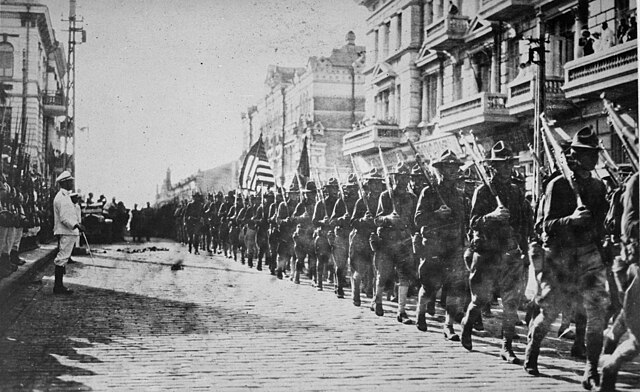Japanese intervention in Siberia
The Japanese Siberian Intervention of 1918–1922 was a dispatch of Japanese military forces to the Russian Maritime Provinces, as part of a larger effort by western powers and Japan to support White Russian forces against the Bolshevik Red Army during the Russian Civil War. The Japanese suffered 1,399 killed and another 1,717 deaths from disease. Japanese military forces occupied Russian cities and towns in the province of Primorsky Krai from 1918—1922.
Japanese soldiers in Siberia
A Japanese propaganda lithograph rallying for occupation of the Russian Far East.
Japanese officers in Vladivostok with local commander Lieutenant-General Rozanov (1920).
Lieut.-General Mitsue Yui and General Kikuzo Otani, the leaders of the Japanese Forces in Siberia
Allied intervention in the Russian Civil War
The Allied intervention in the Russian Civil War consisted of a series of multi-national military expeditions that began in 1918. The initial impetus behind the interventions was to secure munitions and supply depots from falling into the German Empire's hands, particularly after the Bolsheviks signed the Treaty of Brest-Litovsk, and to rescue the Allied forces that had become trapped within Russia after the 1917 October Revolution. After the Armistice of 11 November 1918, the Allied plan changed to helping the White forces in the Russian Civil War. After the Whites collapsed, the Allies withdrew their forces from Russia by 1925.
Allied troops parading in Vladivostok, 1918
Czechoslovak troops in Vladivostok (1918)
Canadian Siberian Expeditionary Force, 1919
American troops parading in Vladivostok, August 1918








